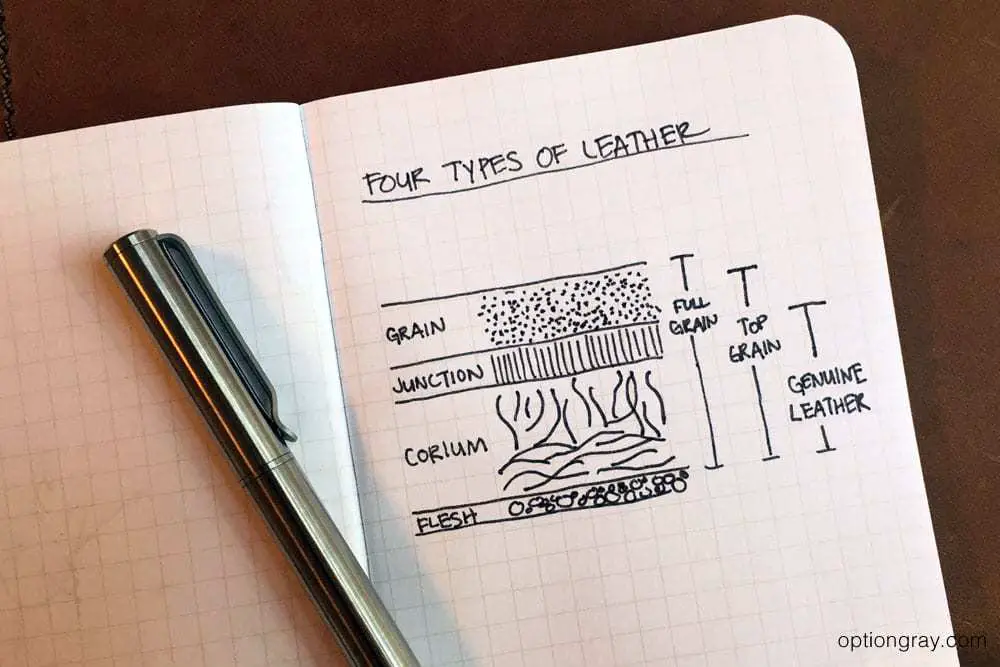To help you become better at leather lingo (and to also help you sound smart the next time someone compliments your notebook cover), here is our four-part guide to understanding leather:
- Types of leather (Current Article)
- Leather weight (Coming Soon)
- Tanning process (Coming Soon)
- Source of cowhides (Coming Soon)
- Taking care of leather (Coming Soon)
Four types of leather
There are four types of leather, (1) Full Grain, (2) Top Grain, (3) Genuine and (4) Bonded Leathers.
1. Full-grain leather
This leather is the most expensive for craftsmen to buy and also the most difficult for them to work with. It’s thick, tough, gets better with age and comes with a story. Because the top layer is still on the hide, you can usually see the natural veins of the cow or any scarring that happened during their lifetime (if they were to scratch themselves on barbed wire, if they were branded, etc.). These natural markings add to the natural character of full grain leather.
2. Top grain leather
Top grain leather is hide split from the top layer of the skin, which is usually how companies or craftsmen take away the evidence of scars, veins, and brands. It also makes the leather thinner, making it much easier to work with over full-grain leather.
If you prefer a finished leather product that is more uniform in its color, top grain leather is for you. This leather is still strong and durable but the top layer, which the strongest vertical fibers, has been removed.
3. Genuine leather
Genuine leather is made from the layers of cowhide that remains after the top is split for the higher grades. The top surface is usually spray painted (“refinished”) to make it look like a higher grade. It can be made to be smooth or rough.
This is a much more manufactured leather and significantly less durable.
4. Bonded leather
The last of the four grades, bonded leather is made from leather scraps and glue (also can be called “reconstituted leather” or “blended leather”). Significantly cheaper than any of the other grades, bonded leather can be manufactured to look like a more expensive leather but quickly degrades as it is used.
Leather type: It’s important, but not everything
As buyers get more educated and have access to more information from technology, more emphasis is being put on the type of leather an item is made out of. Is it full-grain? Top grain? Assumptions are made that if you buy “full-grain” leather it’s automatically the best. But, it’s just one piece understanding what type of leather is being used.
Some craftsmen use the entire cowhide, including the top layer–the “full-grain,” and it’s 8 oz. thick (3mm). A craftsman can still use “full-grain” leather that is literally half the thickness at 4 oz. by splitting the hide in half, and using the top “full-grain” half. Both craftsmen could call their leather “full-grain” but one is half the thickness of the other, with the 4 oz leather still using the strongest part of the cowhide.
Have you ever paid attention to the type of leather you’re buying? How important is it to you?

